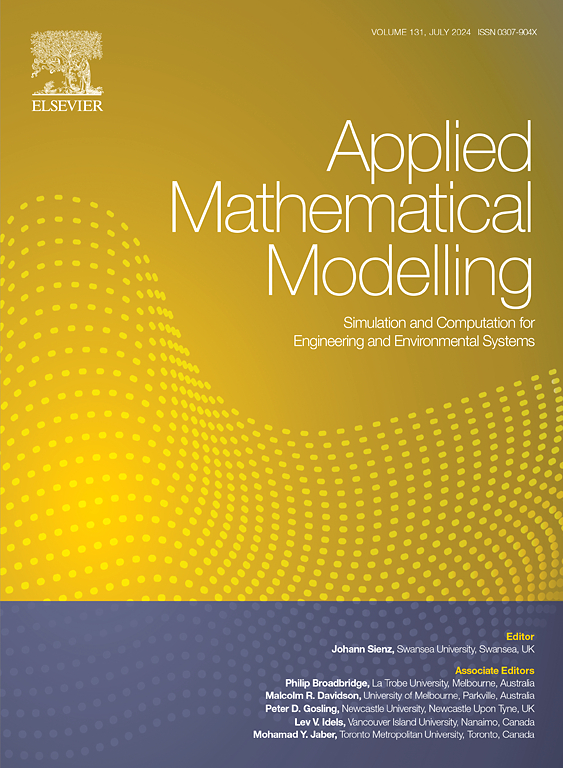Non-planar and nonlinear dynamics of wire-wrapped rod subjected to axial flow. Part I: static and dynamic stability
IF 4.4
2区 工程技术
Q1 ENGINEERING, MULTIDISCIPLINARY
引用次数: 0
Abstract
Wire-wrapped rods are widely used in liquid metal reactors. Under the excitation of high temperature fluids, the wire-wrapped rod will undergo flow-induced vibration, which is a key factor to evaluate the safe operation of reactors. However, there is still a lack of detailed theoretical research on flow-induced vibration of wire-wrapped rod. In order to deepen the understanding of the dynamic behavior of wire-wrapped rod, the non-planar theoretical model is derived based on Hamilton's principle, and the collision and friction between the wire and adjacent rods are considered. This paper also provides a method to obtain the time history of turbulent excitation force through the power spectral density. Comparison with experimental results strongly validates the reliability of the proposed theoretical model. In the first part of the work, we quantitatively investigate the influence of four system parameters on the critical velocities for both static and dynamic instability of the wire-wrapped rod. The study reveals the existence of post-bucking supercritical Hopf bifurcation and the occurrence of stable limit cycle oscillations at high flow velocities. This theoretical model provides a fundamental framework for further research on the three-dimensional nonlinear vibrations of wire-wrapped rod.
轴向流作用下绕丝杆的非平面非线性动力学。第一部分:静态和动态稳定性
线包棒广泛应用于液态金属反应器中。在高温流体的激励下,线包棒会发生流激振动,这是评价反应器安全运行的关键因素。然而,对于缠绕杆的流激振动,目前还缺乏详细的理论研究。为了加深对绕丝杆动力学行为的理解,基于Hamilton原理推导了绕丝杆的非平面理论模型,考虑了绕丝杆与相邻杆之间的碰撞和摩擦。本文还提供了一种通过功率谱密度获得湍流激发力时程的方法。与实验结果的对比有力地验证了理论模型的可靠性。在第一部分的工作中,我们定量地研究了四个系统参数对绕丝杆静态和动态失稳临界速度的影响。研究表明,在高流速下存在后屈曲超临界Hopf分岔,并存在稳定的极限环振荡。该理论模型为进一步研究绕丝杆的三维非线性振动提供了基础框架。
本文章由计算机程序翻译,如有差异,请以英文原文为准。
求助全文
约1分钟内获得全文
求助全文
来源期刊

Applied Mathematical Modelling
数学-工程:综合
CiteScore
9.80
自引率
8.00%
发文量
508
审稿时长
43 days
期刊介绍:
Applied Mathematical Modelling focuses on research related to the mathematical modelling of engineering and environmental processes, manufacturing, and industrial systems. A significant emerging area of research activity involves multiphysics processes, and contributions in this area are particularly encouraged.
This influential publication covers a wide spectrum of subjects including heat transfer, fluid mechanics, CFD, and transport phenomena; solid mechanics and mechanics of metals; electromagnets and MHD; reliability modelling and system optimization; finite volume, finite element, and boundary element procedures; modelling of inventory, industrial, manufacturing and logistics systems for viable decision making; civil engineering systems and structures; mineral and energy resources; relevant software engineering issues associated with CAD and CAE; and materials and metallurgical engineering.
Applied Mathematical Modelling is primarily interested in papers developing increased insights into real-world problems through novel mathematical modelling, novel applications or a combination of these. Papers employing existing numerical techniques must demonstrate sufficient novelty in the solution of practical problems. Papers on fuzzy logic in decision-making or purely financial mathematics are normally not considered. Research on fractional differential equations, bifurcation, and numerical methods needs to include practical examples. Population dynamics must solve realistic scenarios. Papers in the area of logistics and business modelling should demonstrate meaningful managerial insight. Submissions with no real-world application will not be considered.
 求助内容:
求助内容: 应助结果提醒方式:
应助结果提醒方式:


